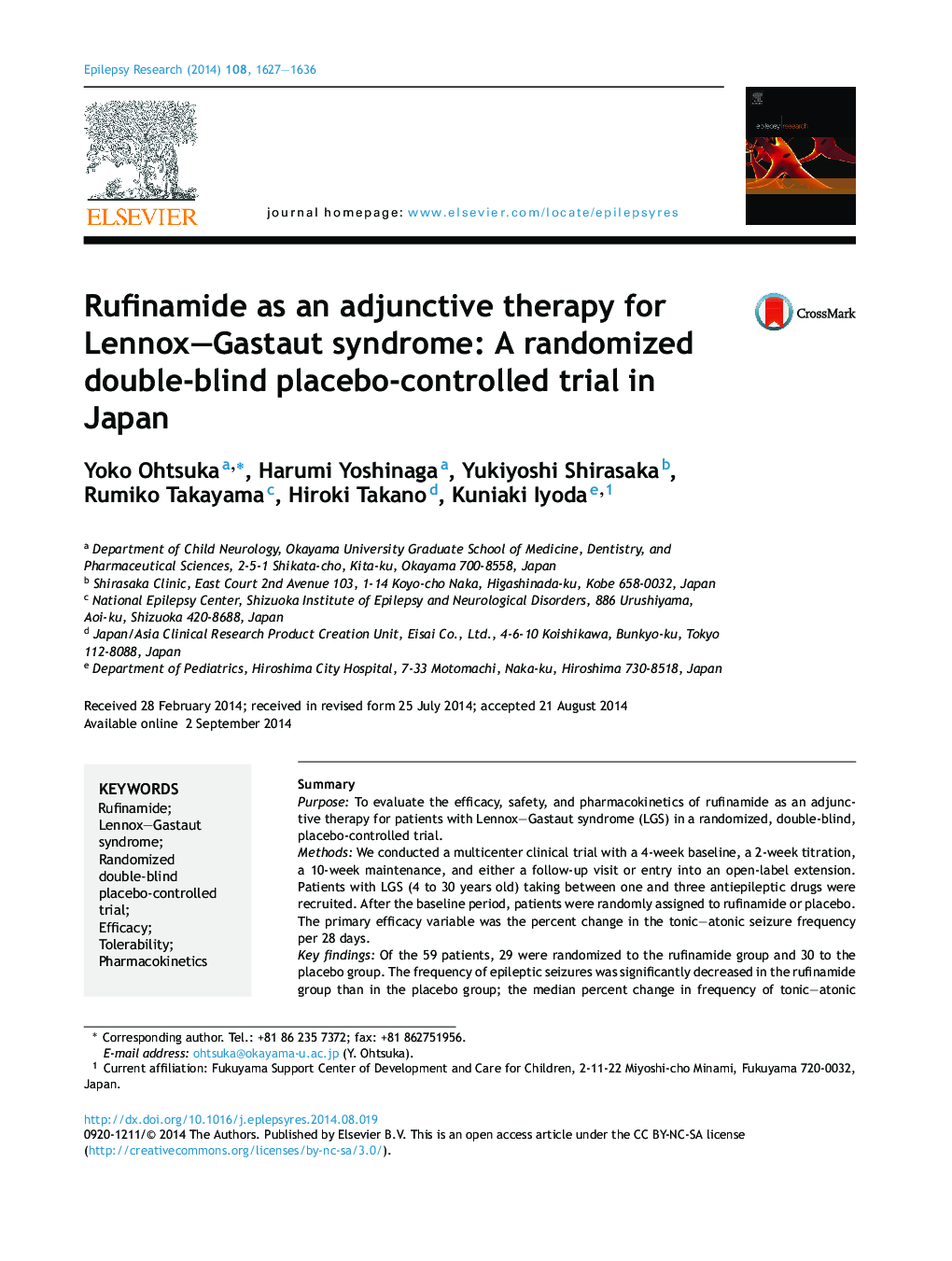| کد مقاله | کد نشریه | سال انتشار | مقاله انگلیسی | نسخه تمام متن |
|---|---|---|---|---|
| 6015472 | 1186069 | 2014 | 10 صفحه PDF | دانلود رایگان |

- Rufinamide add-on therapy for Lennox-Gastaut syndrome.
- A randomized, double-blinded placebo controlled trial.
- Significant reduction in tonic-atonic seizures and total seizures.
- No severe treatment-related adverse events.
- Favorable risk-benefit profile for rufinamide therapy in Lennox-Gastaut syndrome.
SummaryPurposeTo evaluate the efficacy, safety, and pharmacokinetics of rufinamide as an adjunctive therapy for patients with Lennox-Gastaut syndrome (LGS) in a randomized, double-blind, placebo-controlled trial.MethodsWe conducted a multicenter clinical trial with a 4-week baseline, a 2-week titration, a 10-week maintenance, and either a follow-up visit or entry into an open-label extension. Patients with LGS (4 to 30 years old) taking between one and three antiepileptic drugs were recruited. After the baseline period, patients were randomly assigned to rufinamide or placebo. The primary efficacy variable was the percent change in the tonic-atonic seizure frequency per 28 days.Key findingsOf the 59 patients, 29 were randomized to the rufinamide group and 30 to the placebo group. The frequency of epileptic seizures was significantly decreased in the rufinamide group than in the placebo group; the median percent change in frequency of tonic-atonic seizures was â24.2% and â3.3%, respectively, (p = 0.003) and that of total seizures was â32.9% and â3.1%, respectively (p < 0.001). Subgroup analyses indicated that the efficacy of rufinamide was consistent independent of clinical background characteristics. The common treatment-related adverse events in the rufinamide group were decreased appetite (17.2%), somnolence (17.2%), and vomiting (13.8%). Transient seizure aggravations were observed in 13 (22.0%) of the 59 patients, though a causal relationship with rufinamide was suspected in only one patient. All adverse events were mild to moderate in severity. The mean plasma concentration of rufinamide between 1 and 9 within 12 h after administration was 17.2 μg/mL.SignificanceThe present results showed a favorable risk-benefit profile for rufinamide as an adjunctive therapy for patients with LGS.
Journal: Epilepsy Research - Volume 108, Issue 9, November 2014, Pages 1627-1636